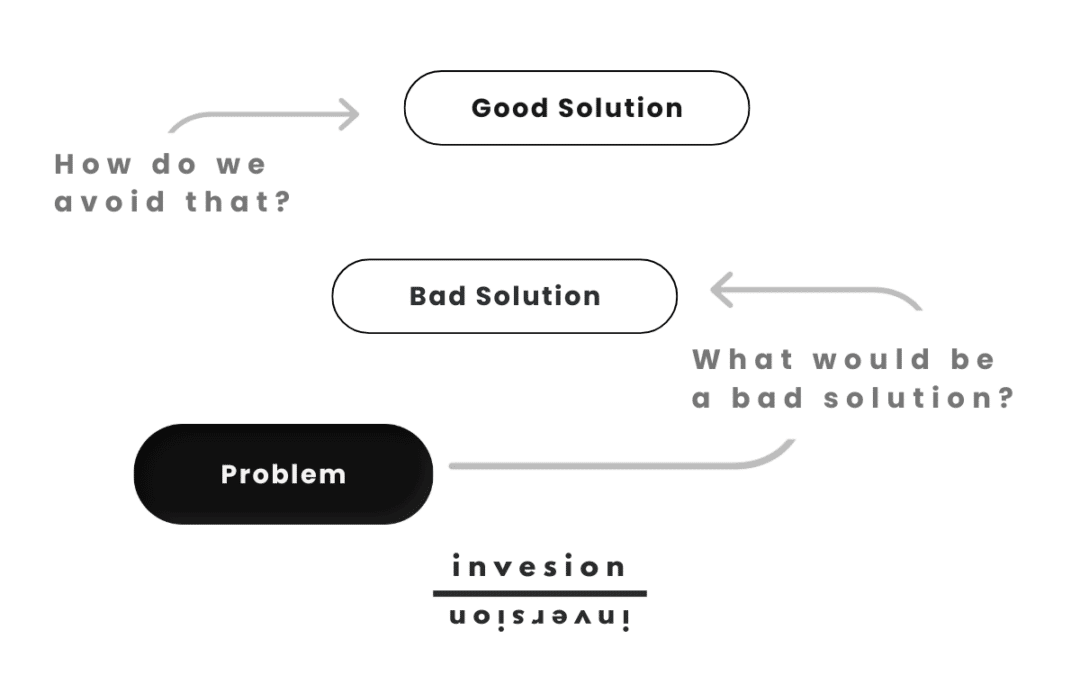Reading Time: 6 minutes
Key Points
- The method involves thinking about problems backward, not just forward.
- Inversion can help avoid common errors and improve decision-making.
- Consider a problem you’re facing
- Think of a bad solution
- Think about how to avoid that bad solution
- Come up with a great solution
Inversion and The Power of Avoiding Stupidity
This concept, drawing inspiration from mathematician Carl Gustav Jacob Jacobi’s mantra, “invert, always invert,” encourages approaching problems from the opposite direction.
It’s a powerful tool you can add to your decision-making arsenal to avoid obvious pitfalls and navigate problems with an awareness of what not to do.
Understanding Inversion
- Inversion involves considering what not to do or how to achieve the opposite result.
- This approach can illuminate hidden assumptions and lead to more effective solutions.
- How could this go wrong?
- What would the opposite of this be?
- What would make a bad solution to this?
Applications in Decision Making
- For instance, in business, instead of solely focusing on promoting innovation, think about what actions would hinder it and avoid those steps.
- In life, instead of only pondering what constitutes a good life, also consider what actions would lead to misery and steer clear of them.
Applications in Project Management
Project managers use inversion in an exercise called pre-mortem.
The team gathers to imagine it’s six months from now and the project they’ve worked on has failed. They examine this potential scenario by asking questions like “What went wrong?”, “What mistakes did we make?” or “Why did this project fail?”.
This makes the team see potential pitfalls ahead of time and prepare for them. By using inversion, they’re able to avoid possible mistakes and bad outcomes.
Benefits of Inversion:
Clarity and Insight:
- Inversion provides a clearer understanding by revealing hidden biases and assumptions.
- It encourages comprehensive problem-solving by highlighting potential issues.
Avoiding Mistakes:
- Focusing on avoiding stupidity is often more straightforward than constantly seeking brilliance.
- Inversion helps identify potential errors and steer clear of them.
Practical Exercise
Active Inversion Thinking:
- Regularly challenge yourself to think inversely about problems.
- Recognize that this approach may not always solve the problem directly but helps in avoiding significant errors.
Mindset Shift:
- Adopt a mindset focused on avoiding obvious mistakes rather than always trying to be brilliant.
- Embrace the principle of inversion as a crucial element in your decision-making process.
Inversion, as a mental model, offers a unique perspective on problem-solving. It encourages looking at issues from multiple angles, thus enhancing understanding and broadening viewpoints. By spending time avoiding obvious errors and less on constantly seeking out smart solutions, you can navigate the complexities of decision-making more effectively.
Nudge for Thought: Next time you face a decision or a problem, remember to invert your thinking.
- Consider a problem you’re dealing with
- Think of 2 bad solutions to try and solve it (take time to think about this one)
- Think about a few ways you could avoid that bad solution
- Doing the opposite of those may help you come up with a good solution
More Questions:
- Ask yourself: What would be the worst decision/solution in this situation?
- Ask yourself: Why would it be bad? Write those reasons down.
- Try to come up with a good decision/solution, now by looking at the reasons that would make a bad decision.

